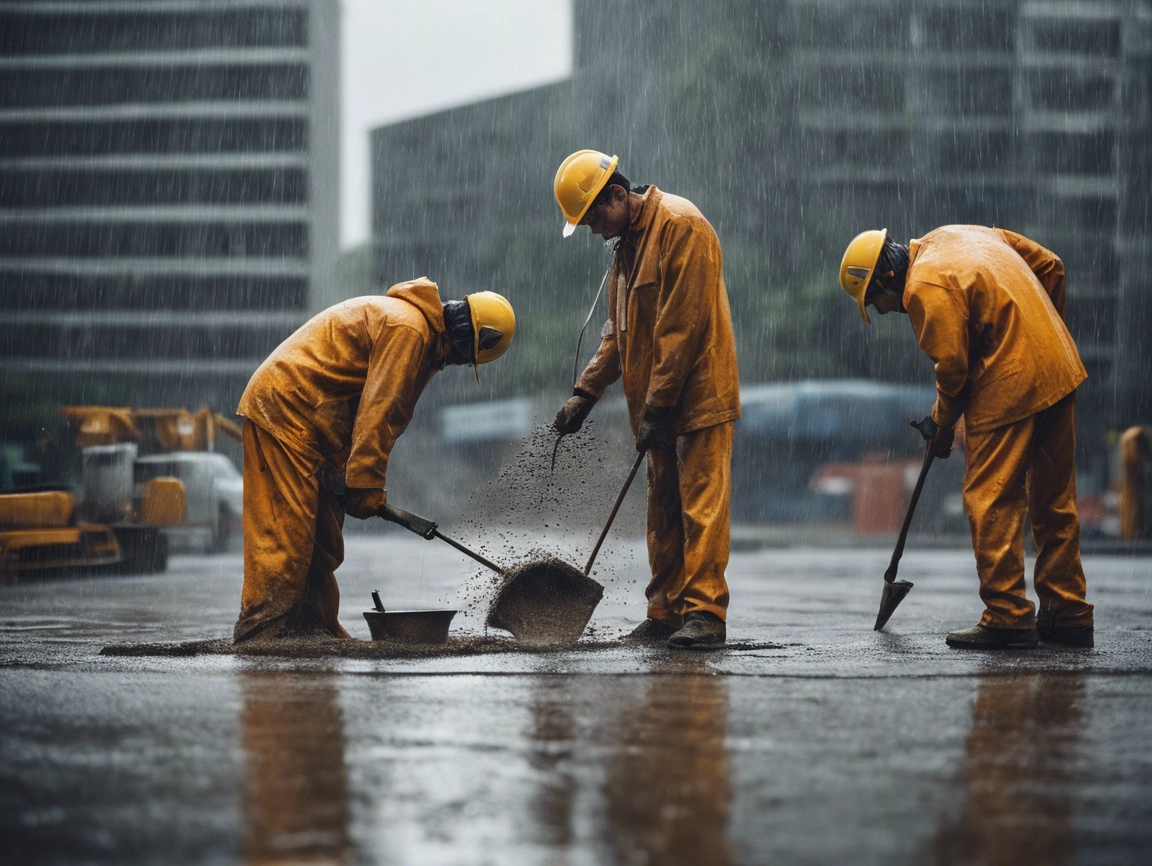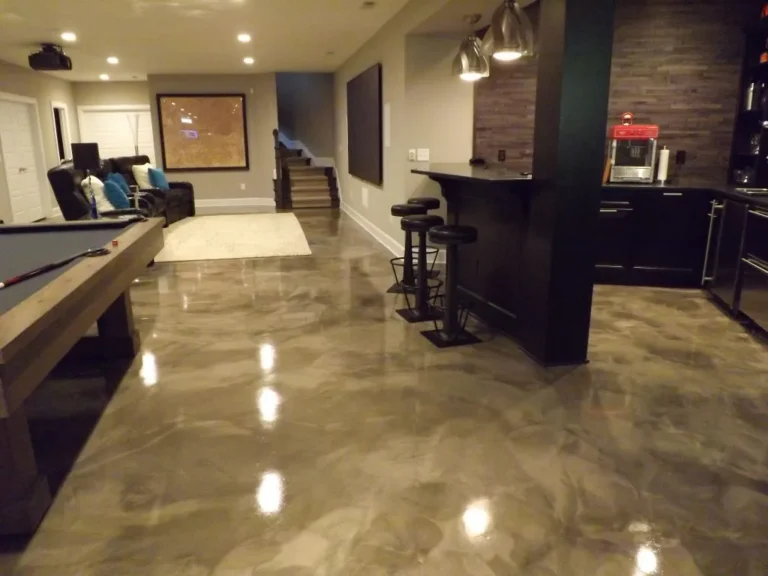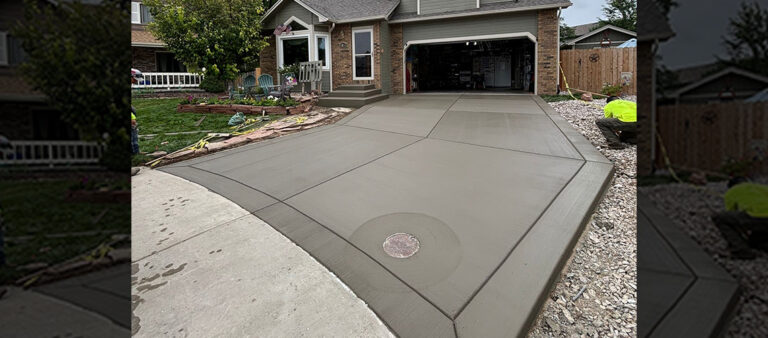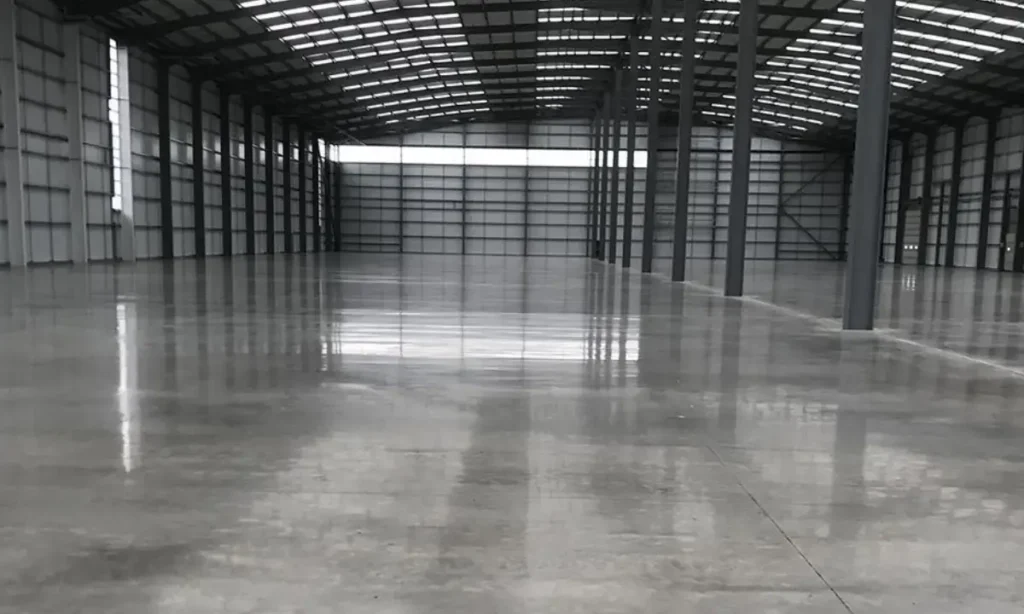Why Pouring Concrete in the Rain Can Be Challenging?
When it comes to construction, one of the most common questions is, “Can you pour concrete in the rain?” The answer is complex, and it largely depends on several factors such as the severity of the rain, the type of concrete being used, and the timing. Pouring concrete during rainy weather can result in weakened surfaces, cracks, or delays in curing, but with the right precautions, it is possible to achieve a solid and durable finish. In this guide, we’ll explore the best practices, challenges, and professional tips for pouring concrete in the rain, ensuring your project remains on track regardless of the weather.
1. Understanding the Challenges of Pouring Concrete in the Rain
Key Points to Consider:
Water-to-Cement Ratio: Excess water can disrupt the critical water-to-cement ratio, leading to weak concrete.
Surface Damage: Rain can cause surface damage, leaving the top layer of concrete brittle and prone to dusting.
Curing Time: Moisture slows the curing process, which can delay the overall project.
Pouring concrete in the rain is a gamble if not managed correctly. Rainwater can dilute the concrete mix, resulting in a bad structure. Even light showers can affect the surface, causing issues like scaling, efflorescence, and unwanted staining. Moreover, excessive water on the surface can compromise the strength and longevity of your slab. To avoid these pitfalls, it is crucial to prepare ahead and follow specific procedures.
2. Best Practices for Pouring Concrete in Wet Conditions
Step 1: Monitor the Weather
Before starting any concrete pour, check the weather forecast. If light rain is predicted, it’s best to postpone the project if possible. However, for urgent projects where delay isn’t an option, monitor the conditions closely to prevent major issues.
Step 2: Use Plastic Sheeting or Tarps
Cover your work area with waterproof sheeting before the rain begins. Make sure the edges are securely weighed down so water cannot seep in. Have extra sheeting on hand to cover the freshly poured concrete until it is set enough to resist damage.
Step 3: Prepare the Ground Properly
One major issue is that rainwater can pool on the ground, causing mud and other debris to mix with your concrete. Ensure that the ground is compacted and prepared properly to prevent water pooling. Lay down gravel or sand as a base to avoid direct contact with wet ground.
Step 4: Use Quick-Setting Concrete
Quick-setting concrete is ideal for rain-prone areas as it hardens faster, reducing the window of vulnerability during downpours. Additives can also be mixed into the concrete to accelerate the drying process, making it less susceptible to water damage.
Step 5: Avoid Overworking the Surface
Once the concrete has been poured, avoid overworking the surface as this can draw excess water to the top. Allow the concrete to set naturally before applying any finishing touches.
Step 6: Post-Pour Protection
Once the concrete is set, continue protecting it from rain for at least 24 hours. Use additional coverings and ensure that the area is free from puddles. This is especially important if heavy rains are expected overnight.
3. Adjusting the Concrete Mix for Wet Conditions
Concrete Mix Adjustments: The most effective strategy when pouring concrete in wet weather is to modify the mix itself. Consider using the following adjustments:
Reduce Water Content: Lower the water-to-cement ratio to compensate for any additional moisture introduced by rain.
Include Air-Entraining Admixtures: These admixtures help the concrete resist the detrimental effects of rain by improving its workability and freeze-thaw durability.
Use Hydrophobic Additives: These specialized additives reduce water permeability, enhancing the concrete’s resistance to water-related damage.
With the right mix adjustments, even rainy weather won’t compromise the structural integrity of your concrete pour. Speak with your concrete supplier about adding rain-resistant chemicals and additives to ensure a successful outcome.
4. Post-Pour Precautions and Maintenance
Cover and Protect the Area
After pouring, it is crucial to shield the concrete from further water exposure. Continue using tarps or plastic covers, especially during the curing period. Make sure the cover doesn’t come into direct contact with the surface, as this can leave marks or damage the finish.
Monitor the Curing Process
Concrete curing is essential to its long-term strength. Rain can interfere with curing, causing prolonged drying times or uneven surfaces. Monitor the curing process closely, ensuring that the environment stays at a stable temperature and moisture level for optimal results.
Fixing Minor Damage
In the event that rain has already impacted the surface, minor surface repairs can be made. This includes using patching compounds or skim coats to repair superficial cracks or imperfections. These repairs should be completed before the concrete fully cures.
5. When to Delay the Pour
Severe Rain Conditions
There are times when even the best precautions won’t be enough. Severe rainstorms, thunderstorms, or continuous downpours are clear indicators that pouring concrete should be delayed. In such cases, it’s better to wait for clearer weather rather than risk an entire project’s integrity.
Ground Saturation
If the ground is overly saturated, it may cause long-term problems for your concrete, such as poor bonding or structural instability. Postponing the pour until the ground dries is often the best option to ensure the foundation’s strength.
Final Thoughts on Pouring Concrete in Wet Conditions
Now that you’re equipped with the knowledge to pour concrete in the rain, the next step is to put these tips into action. However, even with the best guidance, certain weather conditions can still present challenges beyond your control. If you want to ensure your project’s success, consider reaching out to a professional contractor with experience handling weather-impacted concrete pours. They can help assess the conditions, make the right mix adjustments, and implement the necessary protections to safeguard your investment.
Don’t take chances with your concrete project—contact us to discuss your specific needs, get personalized advice, and guarantee a durable, high-quality result even when the weather doesn’t cooperate. Whether you’re planning a small home improvement or a large-scale construction project, professional guidance can make all the difference.





